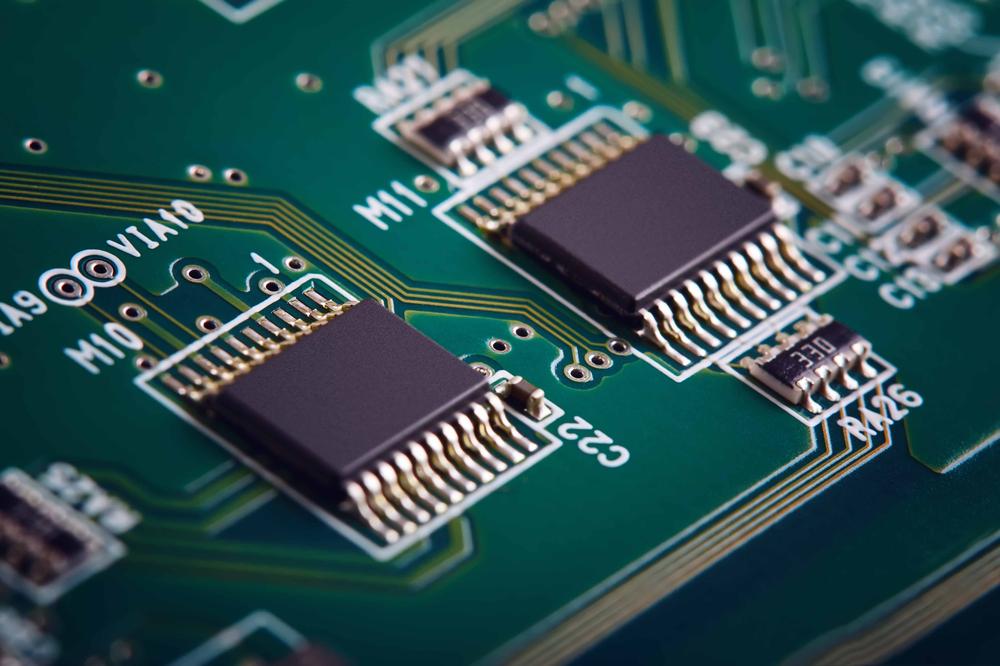
The B2B platform for the best purchasing descision. Identify and compare relevant B2B manufacturers, suppliers and retailers
Close
Filter
Result configuration
Continents
Select continent
Locations
Result types
Company type
Select company type
Industries
Select industry
Company status
Select company status preset
Number of employees
Min.
Max.
Founding year
6G Finland
Finland
A
10001+ Employees
2022
Key takeaway
6G Finland is at the forefront of 6G research and development, driving innovation and establishing global leadership in this next generation of wireless technology. Their commitment to strategic partnerships and ambitious goals positions them as key players in shaping the future of connectivity.
Reference
Core business
6G Finland
EMITE Ing.
Fuente Álamo de Murcia, Spain
A
11-50 Employees
2006
Key takeaway
EMITE is a high-tech company specializing in advanced OTA test solutions for wireless technologies. Their state-of-the-art testing systems are designed to support the development and compliance testing of antennas and devices for 5G and beyond, making them a key player in the evolution toward 6G.
Reference
Product
5G

6G Business
United Kingdom
A
251-500 Employees
2011
Key takeaway
6G Internet has developed its own internet network, enhancing reliance on advanced technologies for broadband connectivity.
Reference
Product
6G Business - Technology
Looking for more accurate results?
Find the right companies for free by entering your custom query!
25M+ companies
250M+ products
Free to use
dasNetz.ag
Halle (Saale), Germany
A
1-10 Employees
-
Key takeaway
The dasNetz AG operates high-performance wireless networks across Germany, providing business customers with stable broadband internet connections and efficient site networking, which could be foundational for the development of future 6G technologies.
Reference
Product
5G |
6G Internet Limited
Burnley, United Kingdom
A
51-100 Employees
2013
Key takeaway
The company emphasizes that its superfast broadband network is delivered using fixed wireless technology, distinct from mobile networks like 4G, 5G, or future 6G. This independent approach allows them to provide faster home broadband speeds at lower prices.
Reference
Core business
6G Internet - Next Generation High Speed Internet
7Gaa
Tsukuba, Japan
A
- Employees
2019
Key takeaway
The company, 7Gaa, is focused on designing ultra-high-speed optical communication systems that are integral to the development of next-generation technologies beyond 5G. Their innovative XGoc system, which supports a bandwidth of 30GHz, highlights their commitment to advancing telecommunications.
Reference
Product
XGocTM – 7Gaa株式会社

6G Academy
London, United Kingdom
A
11-50 Employees
2021
Key takeaway
6G Academy is dedicated to shaping the future of technology through innovative education and a focus on emerging fields such as 6G. They offer resources like the 6G Frontier Database and host discussions on the challenges and innovations surrounding the 6G landscape.
Reference
Core business
6G Academy
The most trusted source for connectivity training, certification, degrees, and research
7G Network
Los Angeles, United States
B
1-10 Employees
2013
Key takeaway
7G Network is an innovative telecommunications provider that offers reliable VoIP services, ensuring seamless communication for business customers both locally and internationally. Their advanced technology and extensive inventory of telephone numbers enhance connectivity, making them a key player in the evolving landscape of telecommunications.
Reference
Core business
About 7G Network – 7G Network
Landover Wireless Corp.
New York, United States
B
11-50 Employees
2008
Key takeaway
5Global is focused on developing an innovative 5G network that aims to provide widespread wireless broadband coverage across the Continental United States. Their commitment to low-cost and accessible mobile broadband may set the stage for future advancements in wireless technology, potentially influencing the transition to 6G.
Reference
Core business
Home | Landover Wireless
2SG Wholesale
Greater Brisbane, Australia
A
11-50 Employees
2015
Key takeaway
2SG is a telecommunications provider that offers advanced connectivity solutions, including the recently available 5G broadband, positioning itself at the forefront of evolving communication technologies. With a focus on customizable and integrated services, 2SG supports its customers' needs through a robust national network and partnerships with tier one carriers.
Reference
Product
Mobility
Technologies which have been searched by others and may be interesting for you:
The next generation of wireless technology, referred to as 6G, is anticipated to revolutionize connectivity by offering significantly increased data rates, reduced latency, and enhanced reliability compared to its predecessor, 5G. This technology aims to integrate advanced applications such as augmented reality (AR), virtual reality (VR), and the Internet of Things (IoT) on a larger scale, enabling seamless communication and interaction between devices. 6G is expected to leverage innovations in areas like artificial intelligence, machine learning, and advanced antenna technologies, which will facilitate smarter networks capable of adapting to user needs in real time. With projected deployment around 2030, 6G holds the promise of transforming how we connect and interact with the world around us.
6G represents a significant advancement over 5G, primarily in terms of speed, capacity, and latency. It is expected to achieve data rates exceeding 100 Gbps, which is ten times faster than the peak speeds of 5G. Additionally, 6G will utilize advanced technologies such as terahertz waves, enabling it to support a massive number of connected devices simultaneously, far surpassing the capacity of 5G networks. Another key difference lies in the integration of artificial intelligence and machine learning within the network architecture of 6G. This will facilitate smarter, more efficient network management and resource allocation. Furthermore, 6G aims to enhance connectivity in previously underserved areas, offering low-latency communication for applications like autonomous vehicles and augmented reality, thus paving the way for innovative use cases that 5G cannot fully support.
1. Ultra-high Speeds
The transition to 6G technology is expected to deliver significantly faster data transfer rates, potentially reaching up to 100 times that of 5G. This enhancement will enable seamless streaming of ultra-high-definition content and facilitate data-intensive applications.
2. Enhanced Connectivity
6G aims to provide improved connectivity for a greater number of devices simultaneously. This is crucial for the expansion of the Internet of Things (IoT) and smart city technologies, allowing for efficient communication between billions of devices.
3. Lower Latency
With advancements in network architecture, 6G is projected to achieve ultra-low latency, enhancing real-time applications like autonomous vehicles and remote surgeries. This reduction in delay will improve user experiences across various sectors.
4. Advanced AI Integration
The integration of artificial intelligence in 6G networks will enable smarter network management and optimization. AI can help in predicting network congestion and dynamically managing resources, ensuring better performance and user satisfaction.
5. Global Coverage
6G is anticipated to provide more extensive coverage, including remote and underserved areas. This will bridge the digital divide and ensure that more people have access to fast and reliable internet services.
The rollout of 6G technology is anticipated to begin around 2030. Research and development activities are currently underway, focusing on enhancing mobile communication capabilities beyond the existing 5G standards. Various telecommunications companies and academic institutions are collaborating to define the architecture and standards that will underpin 6G, aiming for improved data rates, reduced latency, and more reliable connections. As the technology evolves, pilot projects and trials are expected to precede the full commercial launch, paving the way for wide-scale adoption in the years following its initial availability.
Developing 6G technology presents several challenges that need to be addressed for successful implementation. One significant hurdle is the requirement for advanced infrastructure capable of supporting higher frequencies and larger bandwidths. This often involves substantial investment and innovation in hardware and software systems. Another challenge lies in the integration of emerging technologies, such as artificial intelligence and machine learning, into the 6G ecosystem. Ensuring compatibility while maintaining security and privacy is crucial. Additionally, the need for global standardization poses difficulties, as various regions may have differing regulatory frameworks and technological priorities, which can slow down the development process.
Some interesting numbers and facts about your company results for 6G
| Country with most fitting companies | United States |
| Amount of fitting manufacturers | 6839 |
| Amount of suitable service providers | 5827 |
| Average amount of employees | 11-50 |
| Oldest suiting company | 2006 |
| Youngest suiting company | 2022 |
20%
40%
60%
80%
Some interesting questions that has been asked about the results you have just received for 6G
What are related technologies to 6G?
Based on our calculations related technologies to 6G are Magnets, Printed Electronics, Industrial Amplifiers, Electronic Transducers, Electronic Oscillators
Who are Start-Ups in the field of 6G?
Start-Ups who are working in 6G are 6G Academy
Which industries are mostly working on 6G?
The most represented industries which are working in 6G are IT, Software and Services, Telecommunications, Other, Electronics and Electrical engineering, Defense
How does ensun find these 6G Companies?
ensun uses an advanced search and ranking system capable of sifting through millions of companies and hundreds of millions of products and services to identify suitable matches. This is achieved by leveraging cutting-edge technologies, including Artificial Intelligence.